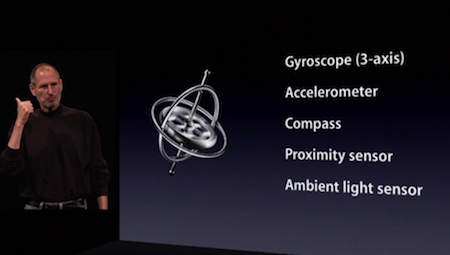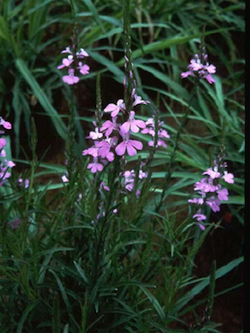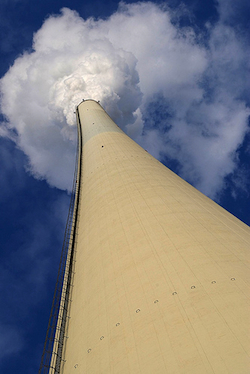Can Chemically Inducing Dormancy Help Plants Cope With Stress?
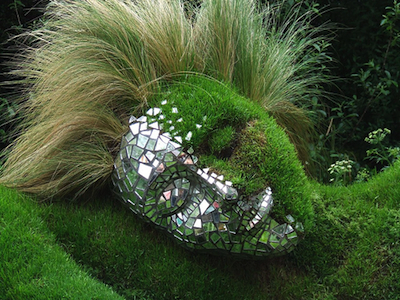 This was a very bad year for wheat in Russia because of an extraordinarily hot and dry summer. And many climatologists believe this may be only a glimpse of the not-too-distant future in many parts of the world. If so, then it is of critical importance to find ways to make crop plants more drought and heat tolerant.
This was a very bad year for wheat in Russia because of an extraordinarily hot and dry summer. And many climatologists believe this may be only a glimpse of the not-too-distant future in many parts of the world. If so, then it is of critical importance to find ways to make crop plants more drought and heat tolerant.
One way to do this, of course, is to develop new varieties of crops that can better withstand hot, dry summers. Unfortunately, using conventional plant breeding, this typically takes a very long time, sometimes decades.
But what if it was possible to spray plants with a chemical that induces them to become more tolerant of heat and drought?
Some scientists believe that research reported in the last couple of years have brought us steps closer to such a scenario.
Abscisic Acid = The Plant’s “Sleeping Pill”?
 As mentioned in a previous post, the plant hormone Abscisic Acid (ABA) triggers the closing of stomata in plant leaves in response to water stress. It also is well known in promoting dormancy in seeds of many plant species. (ABA may also play a role in maintaining a state of dormancy in other parts of plants, but scientific evidence for this is equivocal.)
As mentioned in a previous post, the plant hormone Abscisic Acid (ABA) triggers the closing of stomata in plant leaves in response to water stress. It also is well known in promoting dormancy in seeds of many plant species. (ABA may also play a role in maintaining a state of dormancy in other parts of plants, but scientific evidence for this is equivocal.)
In a way, plant dormancy is somewhat analogous to sleep in that it may induce a sort of near inactive metabolic state in plants.
In such a state, plant cells and tissues are usually better able to withstand extremes of cold, heat, and drought. Briefly, this is due to the expression of protective proteins, such as dehydrins, and to changes in the cellular structures, such as the composition of cell membranes.
What ABA does is trigger the cellular processes involved in such changes. The question that has confounded scientists for many years is exactly how ABA does this.
Targets and messengers.
It turns out that 2009 and 2010 have been very good years for research on the mode of action of the plant hormone ABA.
In 2009, several laboratories, including Sean Cutler’s lab at UC Riverside, identified ABA receptors, that is, cellular proteins that specifically bind to ABA.
And this year, much more was learned about the docking site for ABA on these proteins and about what these proteins do. (See here and here for more about this.)
Briefly, these proteins function as phosphatases, which often function to regulate the activity of other enzymes. In this way, they act as an army of messengers, greatly amplifying and elaborating the ABA signal.
Artificially Inducing Dormancy?
Information about the ABA docking site may allow scientists to develop chemicals, such as pyrabactin, that can mimic the action of ABA, but that are way more stable and cheaper than the natural plant hormone ABA itself.
Some scientists envision the use of such chemicals as a way to artificially induce a transient dormancy-like state in growing crop plants, such as wheat for example, in order for them to survive episodes of extreme heat and drought.
For example, Dr. Mike Sussman, from a recent article regarding his work on ABA puts it this way: “”Since they cannot walk or run, plants have developed an interesting and complicated system for sensing and responding very quickly to dehydration and other stresses,” says Sussman, noting that, on average, a plant is composed of 95 percent water. “Most plants have what’s called a permanent wilting point, where if water content goes below 90 percent or so, they don’t just dehydrate and go dormant, they dehydrate and die.”
Figuring out how to trigger a dormant state, such as exists naturally in seeds, which are 10 percent water and can in some cases remain viable for hundreds of years, could be key to creating plants that survive drought in the field, Sussman explains.”
It’s possible that someday farmers will spray their wheat fields with such chemicals, which will induce the plants to “sleep through” an unusually hot, dry period.
HowPlantsWork © 2008-2011 All Rights Reserved.



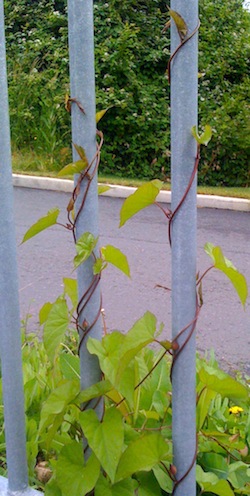 Though the iPhone 4 may have a couple of environmental sensors lacking in plants, plants are much more intelligent than iPhones when it comes to
Though the iPhone 4 may have a couple of environmental sensors lacking in plants, plants are much more intelligent than iPhones when it comes to 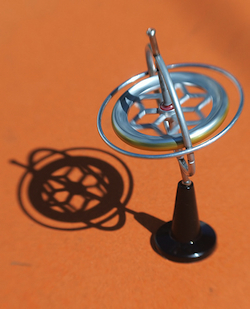


 Is the iPhone 4 More Aware of Its Surroundings Than a Typical Plant?
Is the iPhone 4 More Aware of Its Surroundings Than a Typical Plant?
